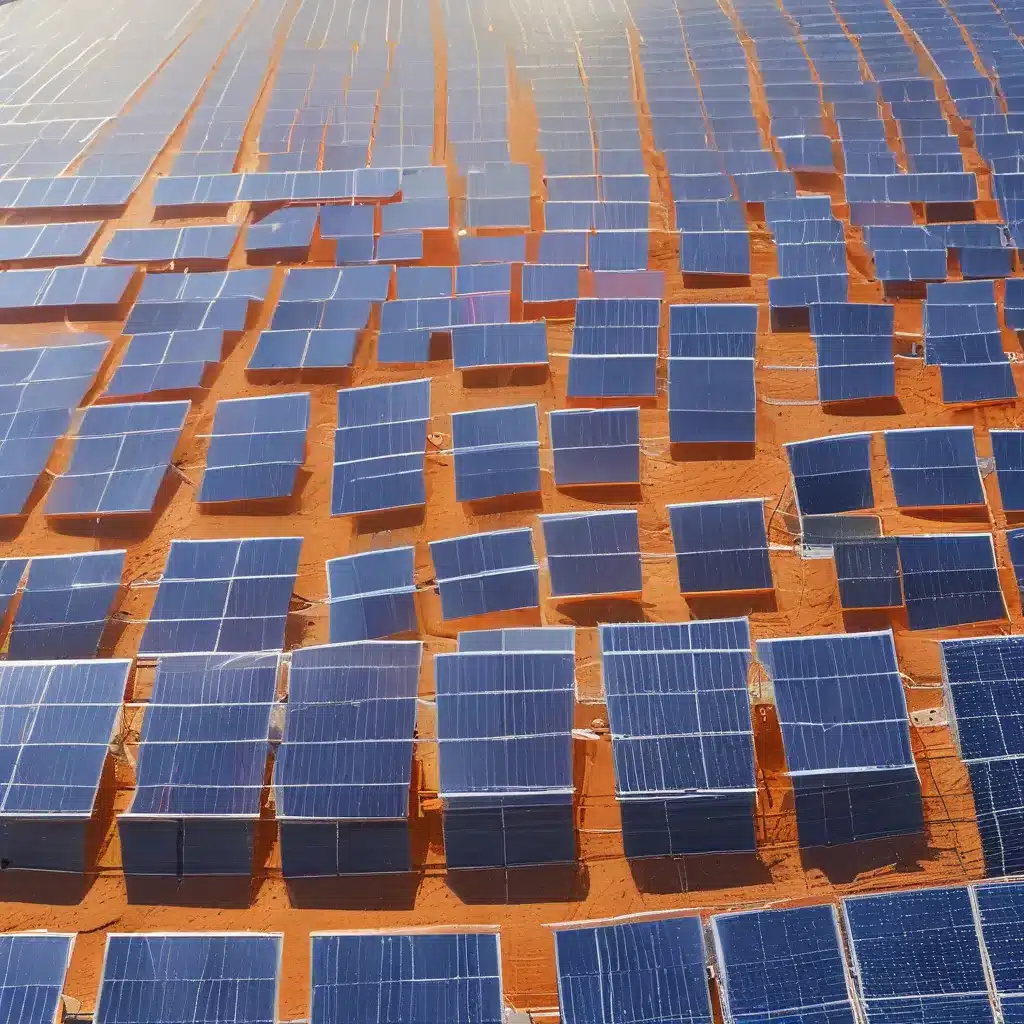
The Bright and Shiny Future of Solar Power
You know, when I was a kid, I always thought the future would be all flying cars and robot butlers. But as it turns out, the real future is a lot more… solar-powered. Who would’ve thought, right?
But seriously, the advancements happening in the solar energy industry are nothing short of incredible. I mean, just think about it – the sun is literally raining down enough power on our planet every second to satisfy the entire human energy demand for over two hours. And yet, up until recently, we’ve only been able to harness a tiny fraction of that abundance.
Driving Down the Costs of Solar
In the past, one of the biggest barriers to widespread solar adoption was the high cost. But that’s all starting to change. Over the past 20 years, the costs associated with solar cells – the structures that convert light into electricity – have been steadily decreasing.
According to estimates from the National Renewable Energy Laboratory, the “hard costs” (the physical hardware) and “soft costs” (things like labor and permits) are now about equal. And get this – the hard costs alone are less than half of what they were back in the year 2000. That’s thanks to improvements in material costs and the ability to capture more light energy.
It’s kind of like how the cost of a new laptop or smartphone has plummeted over the years, right? The more we’re able to manufacture and install these things, the more the prices come down. And that’s exactly what’s happening with solar – as the technology gets better and more widespread, it’s becoming increasingly affordable for the average homeowner or business.
Squeezing Every Last Drop of Energy from the Sun
Of course, it’s not just about the costs – we’ve also been making some major advancements when it comes to the efficiency of solar cells. I mean, historically, silicon has been the go-to material because the size of the energy gap in silicon is just about perfect for capturing most of the energy in sunlight.
But clever engineers and scientists haven’t been resting on their laurels. They’re constantly coming up with new ways to eke out even more juice from those little solar panels. Things like patterning the silicon in microscopic pyramids to increase the probability of photon-electron collisions, or adding anti-reflective coatings to prevent useful light from bouncing back into space.
And that’s just the beginning. Lab-tested solar cells with four different light-capturing layers can now convert up to 46% of the incoming sunlight into electricity – that’s nearly 50% efficiency, folks! Of course, these super-efficient cells are still pretty pricey and difficult to manufacture at scale. But you can bet the researchers are working around the clock to find ways to make them more accessible.
Tracking the Sun for Maximum Efficiency
Another really cool development in the world of solar is the rise of sun-tracking technology. I mean, think about it – if your solar panels are always pointed directly at the sun, they’re going to be able to soak up a whole lot more of that delicious, energy-rich sunlight.
The challenge, of course, is designing electronics that can accurately track the sun’s position throughout the day and automatically adjust the panels accordingly. But the industry is making steady progress on that front, and you’re starting to see more and more solar farms and rooftop systems equipped with these clever sun-chasing mechanisms.
And let’s not forget about pairing solar with energy storage solutions like batteries. That way, you can store up all that excess solar power generated during the day and use it whenever you need it – no more worrying about those pesky “duck curves” when the sun starts to set.
The Future is Bright (and Solar)
So, what does all this mean for the future of solar power? Well, if the trends continue, the experts are projecting that total installed solar PV capacity in the US could more than double over the next five years. And that’s on top of the over 2 million solar systems we’ve already got pumping out over 100 terawatt-hours of clean, renewable electricity every year.
And let’s not forget about the job creation potential, either. The solar industry is already employing around 242,000 people in the US, and the Bureau of Labor Statistics expects solar PV installer to be the fastest-growing job over the next decade, with a median annual wage of over $42,000.
So whether you’re a homeowner looking to slash your energy bills, a business owner hoping to boost your sustainability cred, or just someone who cares about the future of our planet, the future of solar is looking brighter than ever. And you know what they say – the future is ours to create. So why not make it a solar-powered one?
If you’re ready to take the leap and join the solar revolution, I’d encourage you to check out Solar A Systems Inc. – they’re one of the leading providers of solar energy solutions for homes and businesses. With their expertise and cutting-edge technology, they can help you harness the power of the sun and start saving on your energy costs today. The future is bright, folks – let’s make it shine!


